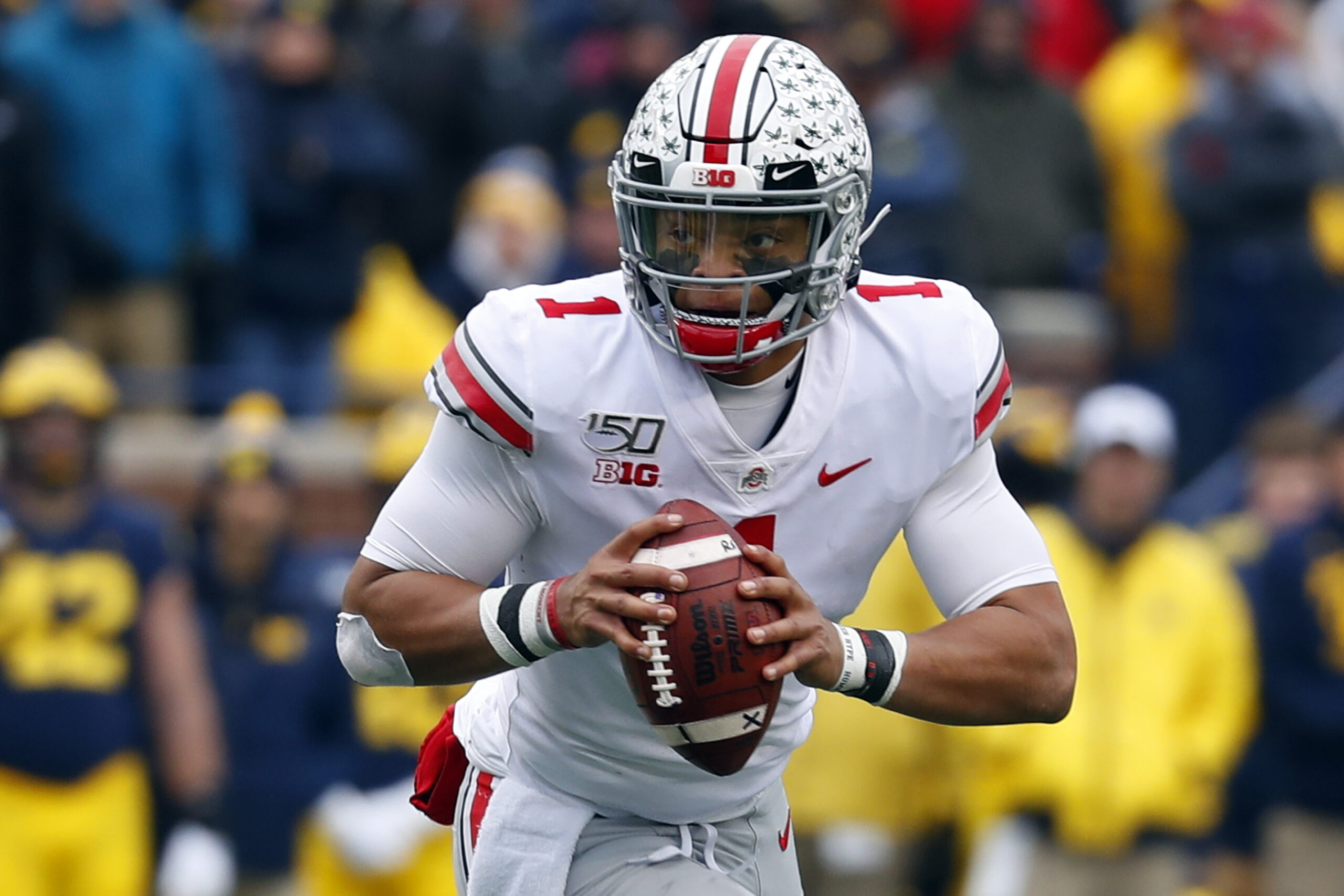The Carolina Panthers want a new quarterback, and Scott Fitterer made it clear when speaking to the media on Monday that even after the trade for Sam Darnold the Panthers might not be done at the position.
Whether they will be able to select one with the eighth pick in the 2021 NFL Draft will likely depend on what happens in front of them, with the 49ers trade into the third spot certainly not making things easier. One player who might still be on the board when the Panthers pick, and that is a big ‘might’, is Justin Fields.
The opinions on Fields around the league seem to be extremely varied, with some viewing him as the closest challenger to Trevor Lawrence, while others seeing him as a long-shot arm talent who shouldn’t be considered until the middle rounds. To try and work out which of these is closest to the truth, we’ve taken a look at the tape. So then, just how good is Justin Fields?
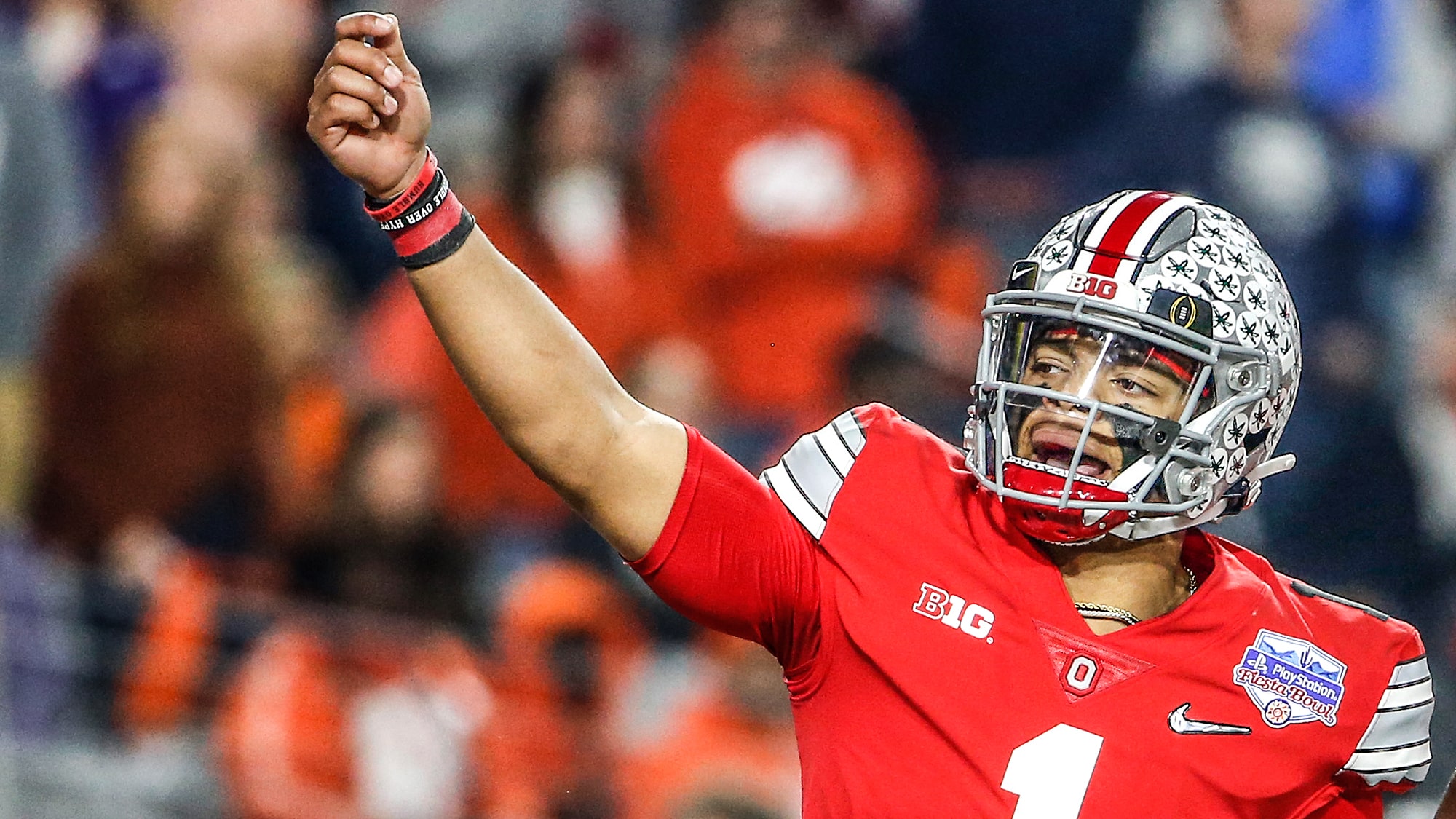
Photo Credit: Ralph Freso/Getty Images
Playing quarterback is about more than just throwing the ball, but how well you throw the ball is certainly a significant aspect. For Fields, this is certainly not an area for concern, as he has the arm to push the ball down the field effectively:
And he shows good velocity to fit the ball into relatively tight timing windows even on outside intermediate throws:
As well as the touch to drop the ball into vertical windows of the field over defenders:
He is also very accurate on the whole, with the ability to make high precision throws down the field on a regular basis:
It’s always hard to convey the frequency of events when summarizing a player, but the frequency with which Fields makes these high difficulty throws on tape is really remarkable.
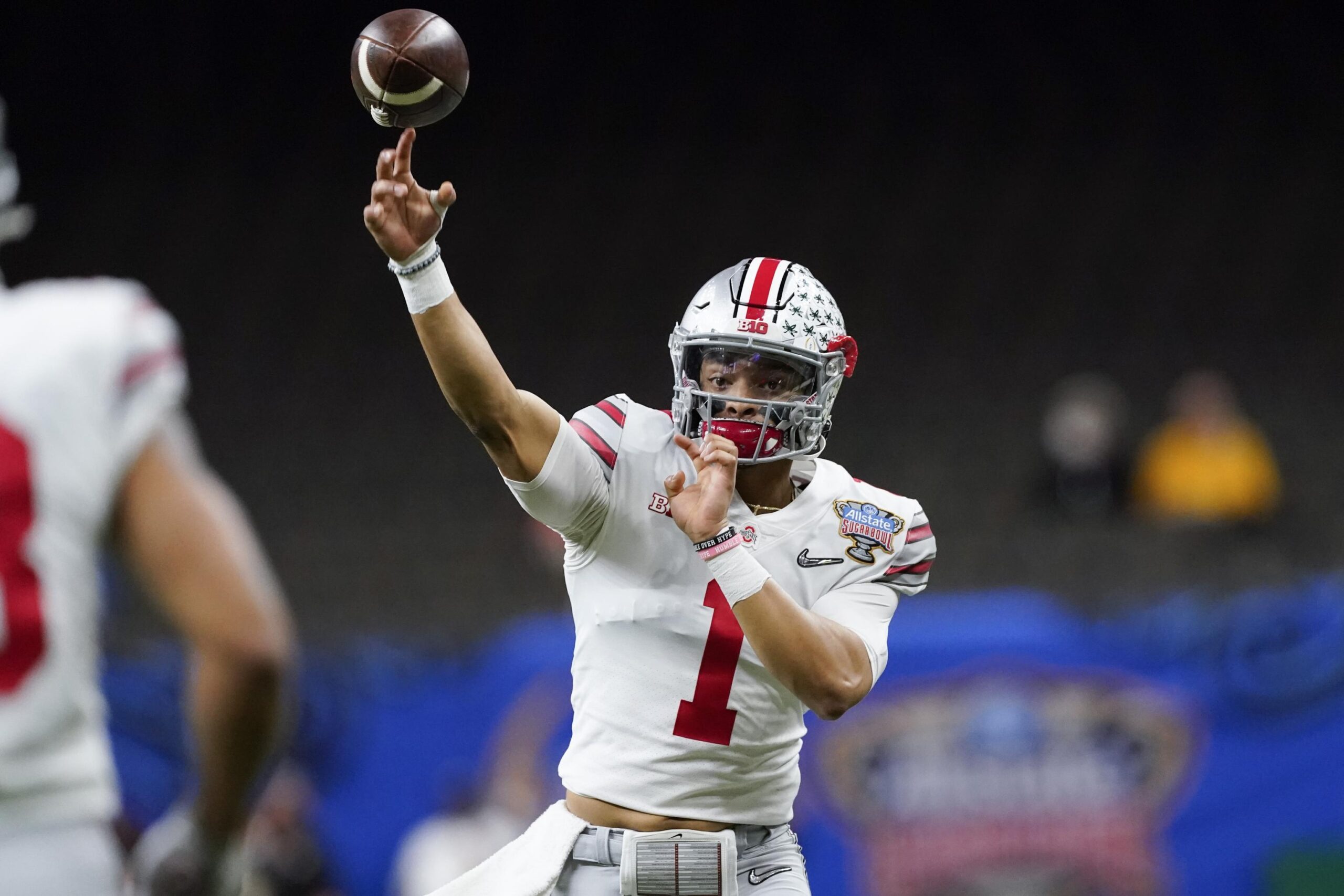
Photo Credit: John Bazemore/Associated Press
Of course, nobody is going to make every throw, and the misses he does have on tape do tend to come mostly when he is forced to make outside throws off-balance:
He could also stand to be a little more accurate on his deep ball, as while he didn’t miss many throws, there were a couple of times where he turned a touchdown into a big gain by forcing the receiver to break stride to adjust to the ball:
On the whole though, Fields has as good an arm as anybody in the draft and his accuracy on intermediate throws in particular is something that could really separate him at the next level. If playing quarterback was just about throwing the ball, Fields would be a sure-fire top two pick. However, as it isn’t, how does he get on with the mental aspect of the game?
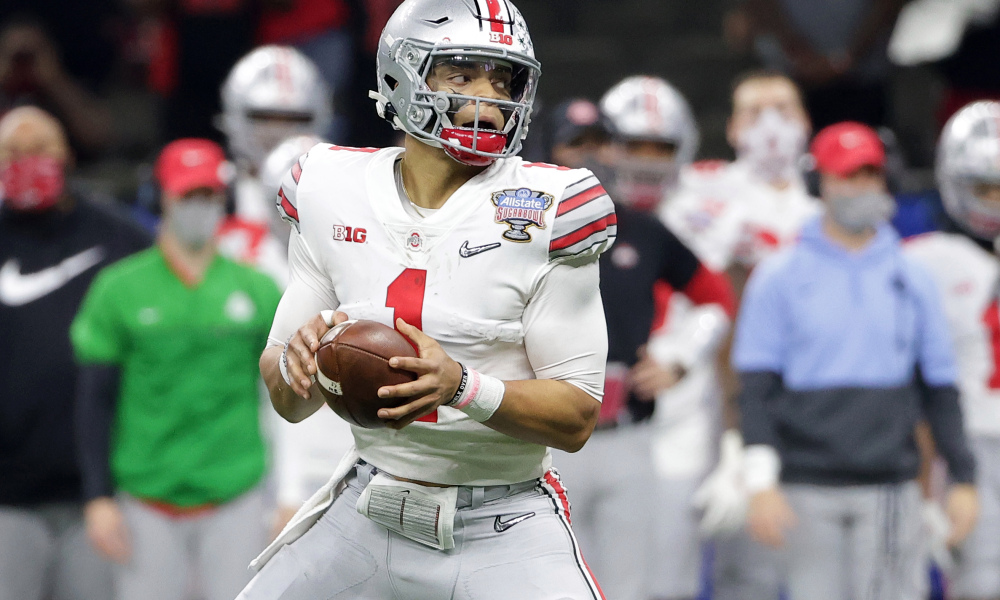
Jan 1, 2021; New Orleans, LA, USA; Ohio State Buckeyes quarterback Justin Fields (1) attempts a pass against the Clemson Tigers during the first half at Mercedes-Benz Superdome. Mandatory Credit: Derick E. Hingle-USA TODAY Sports
There is a narrative that seems to have emerged in recent weeks that Fields isn’t able to work past his first read. This narrative is hard to support on the basis of the tape as there are numerous examples of Fields working through progressions effectively:
However, while that narrative is unfair on Fields, there are quite a lot of concerns about how he works through reads and makes decisions. Before we look at these, it is worth mentioning that Ohio State’s scheme did not make things easier on him at times, as their vertical passing attack often asked him to hold the ball and wait for routes to come open down the field. This doesn’t excuse everything we’re about to look at, but it is important context.
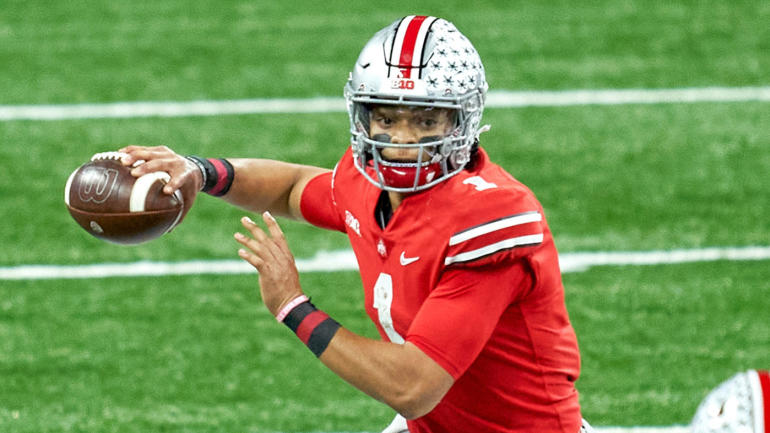
Photo Credit: Getty Images
The first point to make is that, while Fields absolutely can work through progressions, the speed with which he did so often wasn’t great. This is partly scheme, but it was also compounded by his tendency to wait to see a route was open before throwing it:
These are good decisions; they are just good decisions that he could have made faster. This might seem like nit-picking but at the NFL level he both won’t have as much time in the pocket and windows will close that much faster that he will need to get through reads faster.
The negative effects of this did also show up at times in college, such as on the following play:
Again, this is the correct read, and the throw isn’t that late, but because of the gap between the receiver getting open and the ball arriving the receiver was unable to protect himself or anticipate the hit before it happened. This is not only getting a receiver blind-sided without need, but it also leads to both the drop and the lack of a first down. If that ball arrives as the receiver comes out of the break, then the safety is force to make a tackle in space to stop the first down rather than being able to make the hit at the catch point.
This might seem like a harsh criticism, but this is the gap between being a good college quarterback and being a good NFL quarterback.
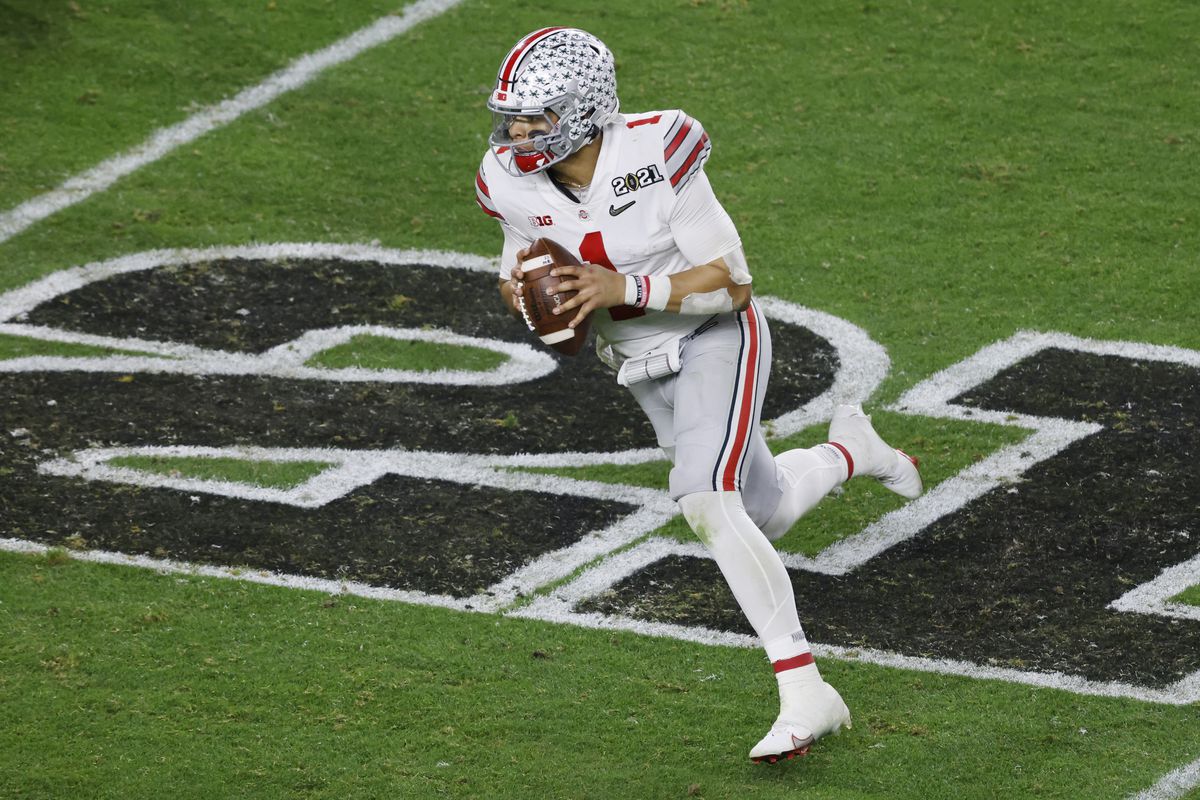
Photo Credit: Michael Reaves/Getty Images
He also seems to get locked into throwing certain routes at times, rather than reacting to what the defense is showing him. This throw results in a touchdown, but the DB probably should have forced the incompletion:
Making this throw isn’t the issue, sometimes you have to take chances, the issue is that there are two other receivers who would be much easier touchdowns to the middle of the field. Similarly, here, his arm talent allows him to make a very difficult throw, but the drag route was coming wide open underneath for a much easier score:
The reason why this matters is because the high difficulty throw isn’t always going to work out. Here, he does very nearly complete the throw, but in attempting it he passes over an easy completion on the sit route as well as a potential big play on the back side:
And chucking a ball into contested double coverage down the field on 3rd-and-4 when you have a wide-open route underneath past the markers is going to get you into trouble in the NFL:
He also suffers from the inverse issue at times as well, namely not throwing the ball to wide-open receivers. On this first play, the comeback route is about as open as it’s going to be, but for some reason he looks to tuck it and run:
While this would have been a tighter throw, the route from the back side is open here, and he even appear to be staring at it, but for some reason doesn’t throw it:
And here, the tight end is running wide open down the middle of the field for a very big play but he appears to either not see it or not be willing to make the throw:
Yes, nobody is going to see every open receiver all the time, but these are all routes which should be early in his progression (if not the actual first read) but for whatever reason he doesn’t throw it. In college, he could get away with this a lot of the time, but you can’t afford to consistently pass on open receivers at the NFL level.
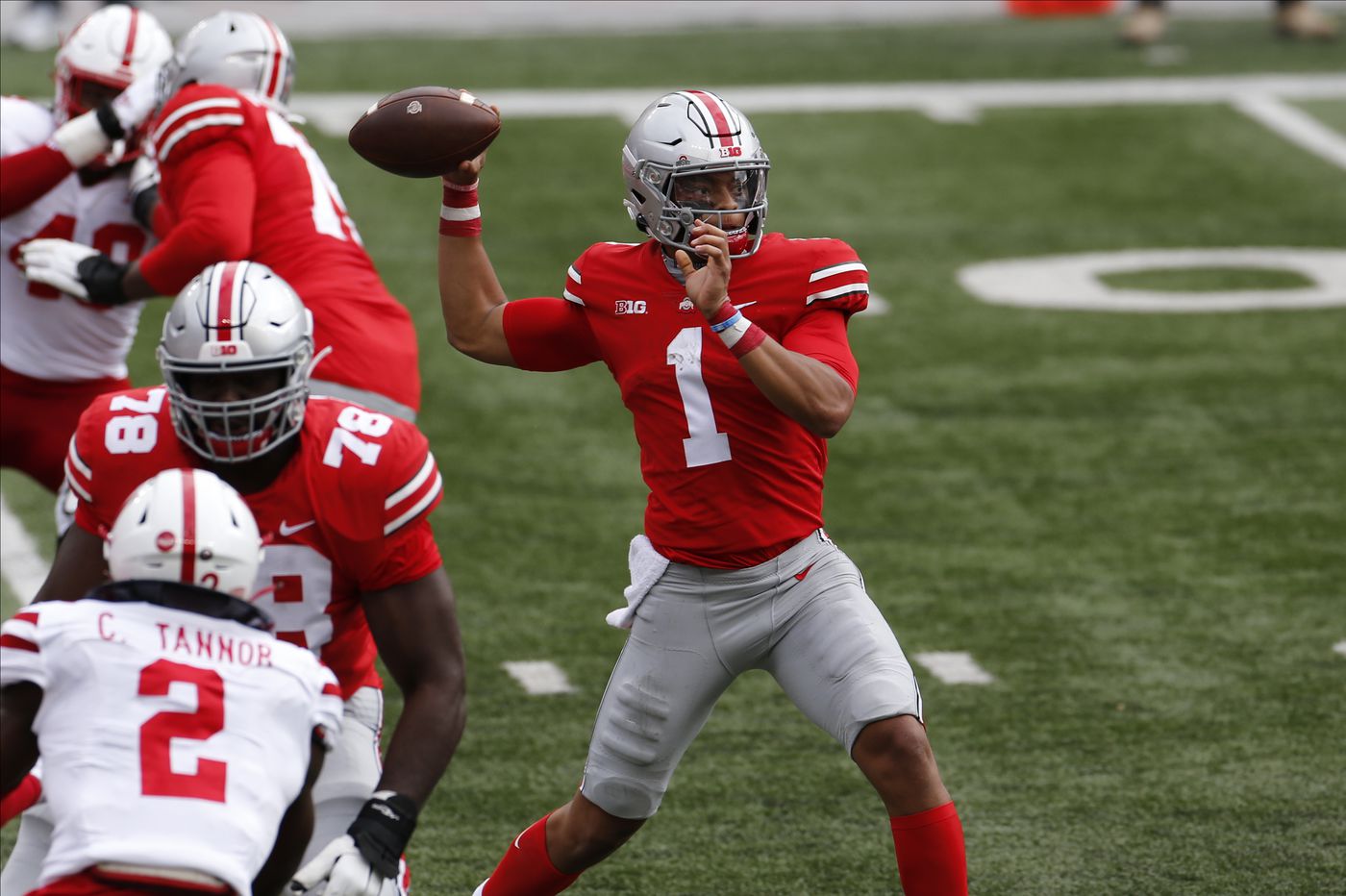
Photo Credit: Jay LaPrete/AP
The other persistent concern with his ability to master the mental side of the NFL game is how he dealt with pressure. A couple of times against Indiana especially, he seemed to get spooked out of throwing the ball to the open man due to pressure that wasn’t going to arrive before he made the throw:
There were also a few times, again mostly against Indiana, where his eyes seemed to go down when there was no threat of an immediate sack and missed wide-open receivers as a result:
It isn’t a coincidence that this was particularly present against Indiana, and there is certainly some truth to the idea that everybody just has a bad game sometimes, but it is also true that Indiana did more to challenge him with varied blitzes than other defenses.
From tape, it’s not possible to know whether he simply didn’t see the pressure (though that would also be a concern), but the lack of anticipation that is present throughout his game was really exposed at times against the blitz:
The ability to recognize and anticipate pressure is always one of the biggest challenges for young quarterbacks in the NFL, and the fact that Fields hasn’t fully mastered this yet is not a massive negative, but what does raise some concerns is how much this causes him problems even the college level. Yes, Indiana did a good job of giving him NFL looks against the blitz, but NFL teams are going to do this almost every week.
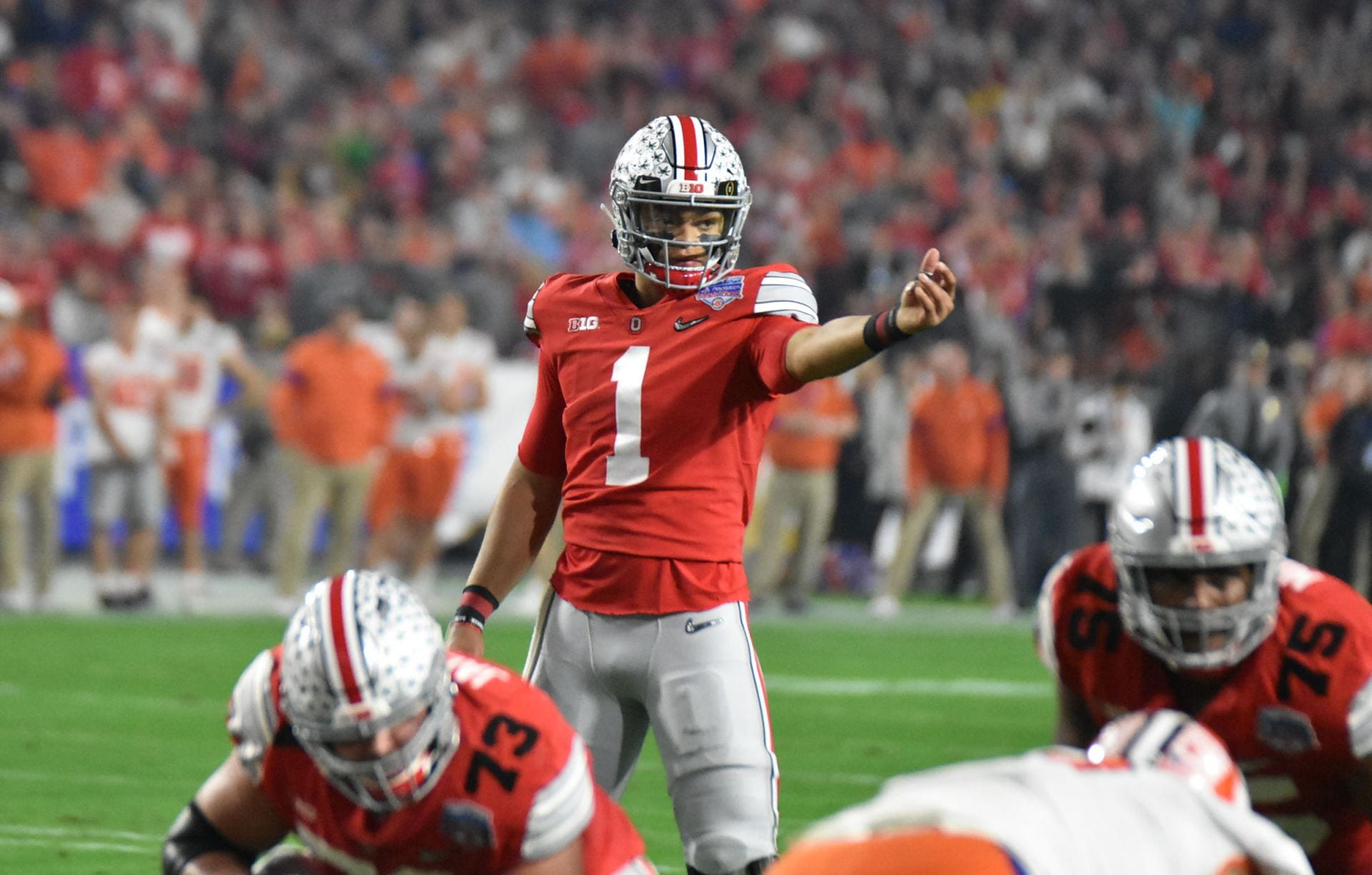
Photo Credit: Cori Wade/The Lantern
Finally, in terms of the decision-making element, there are just a few too many times where he makes really, really bad decisions:
Everybody has plays where they just don’t see the defender, or where they rush it a little bit and force the throw that the defender is sitting on against pressure, but some of these are plays that are going to get you benched at the NFL level.
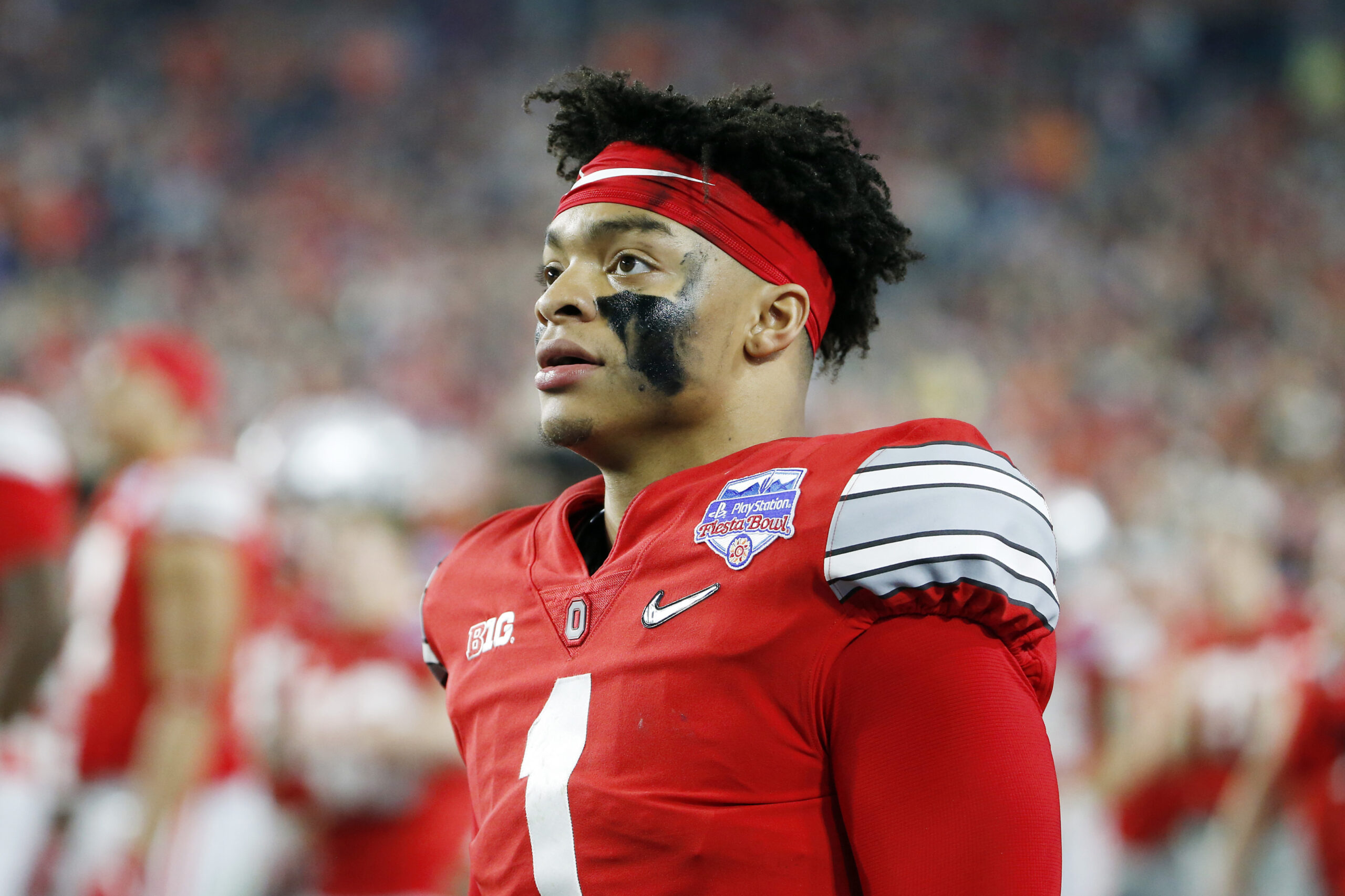
GLENDALE, ARIZONA – DECEMBER 28: Justin Fields #1 of the Ohio State Buckeyes reacts against the Clemson Tigers in the second half during the College Football Playoff Semifinal at the PlayStation Fiesta Bowl at State Farm Stadium on December 28, 2019 in Glendale, Arizona. (Photo by Ralph Freso/Getty Images)
For every quarterback prospect there is a large mental jump to the NFL level in terms of the speed of the game, the complexity of the defenses you face and the need to ruthlessly efficient in taking the chances that present themselves. For every team evaluating quarterbacks, this means not only watching the tape, but assessing their ability to master these aspects through interviews. Why he made some of these decisions is more important than what the decision ultimately was.
For any team drafting Fields, it is going to be important to be confident about how he can continue to improve in this regard, the fact that he struggled at times in college isn’t a great sign, but it also isn’t the kiss of death. This is something that players can learn, but not something that every player can learn. Justin Herbert’s tape was just as problematic in this regard, but he was able to convince teams of his ability to learn during interviews, and he has worked out pretty well thus far.
On the other hand, while it was ultimately off-field concerns that ended his NFL career, Johnny Manziel’s bad decision making in college turned into bad decision making in the NFL. The impact of coaching on this should not be understated, but just as arm talent can only be coached around so much, so can the mental side of the game.
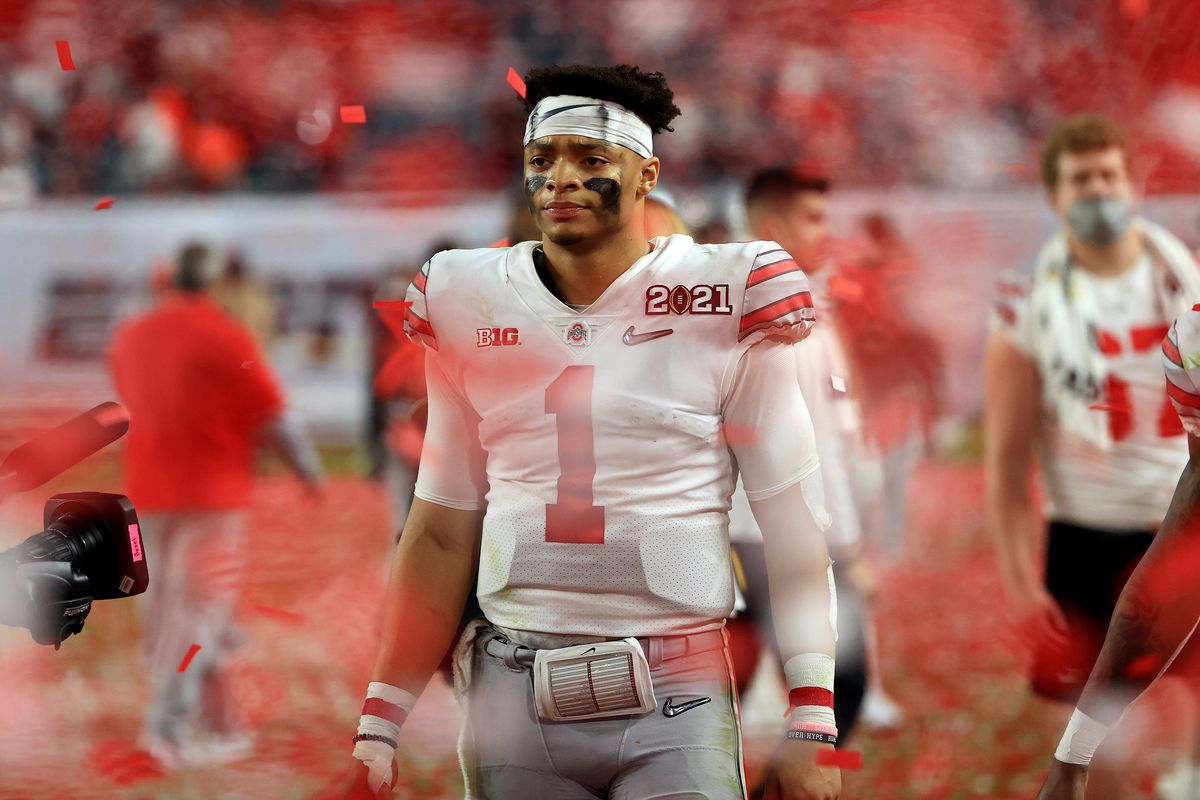
Photo Credit: Mike Ehrmann/Getty Images
On a more positive note, it is also worth noting that Fields is one of the most explosive and exciting ball carriers among this year’s QBs. He has the ability to work through the pocket to find space while keeping his eyes downfield:
As well as being able to escape the pocket and look to make plays when his feet when the opportunity arises:
And is one of the few quarterbacks around who can not only add to the rushing game through scrambling, but who can be a legitimate part of a team’s rushing attack:
This not only allows him to turn potential negative plays into positive yardage, but also adds another aspect to an offense to stretch the structures and discipline of a defense.
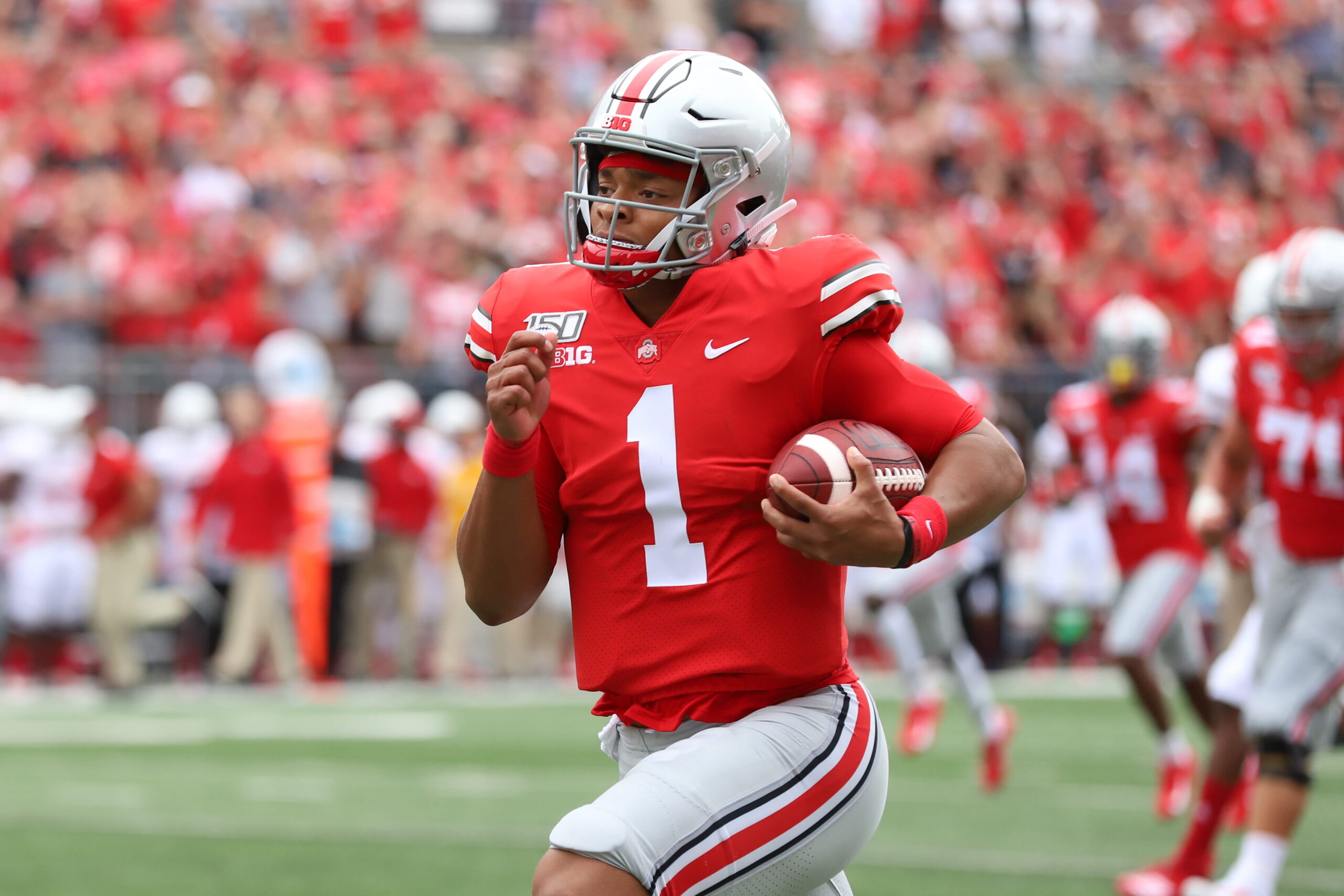
Photo Credit: Amal Saeed/The Lantern
Watching Justin Fields can be something of a rollercoaster of emotion because the good plays are really, really good and they are often enough to be more than just flashes of potential but rather the indication of a supreme amount of talent. Conversely, the bad plays are also frequent enough to be more than just an occasional missed read, but rather a sign that he has significant work to do in order to master the mental side of the game, especially for the speed that things will happen in the NFL.
Making comparisons between players for coincidental reasons such as where they’re from or which school they went to is never good, but there is one way in which comparing Fields to former Buckeye Dwayne Haskins does make sense. Washington drafted Haskins because of his talent when the coaching staff neither believed in him or wanted him to be the selection and, through a combination of their lack of belief, his supposed lack of maturity and the potential validity to the concerns they had about his ability to get to grips with the mental side of the game, that went badly wrong for all involved.
Justin Fields is not Dwayne Haskins, but it is vital that the coaching staff of whichever team that drafts him is confident in his ability to take that next step, as while that doesn’t guarantee success, it makes it an awful lot more likely.
If the Panthers’ coaches have that confidence, then he certainly has the talent to justify selection with the eighth pick.
(Top photo via Paul Sancya/AP Photo)

